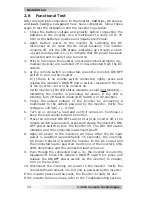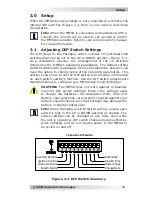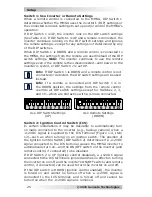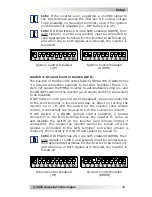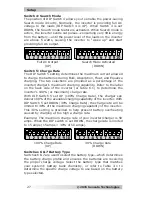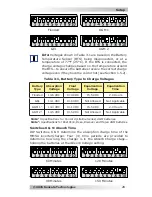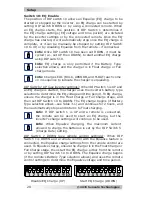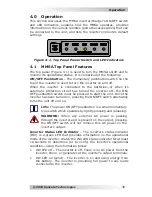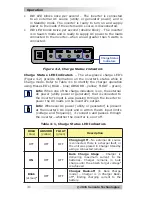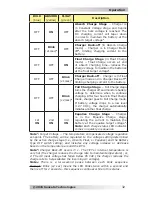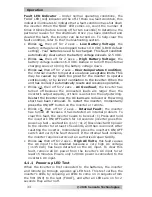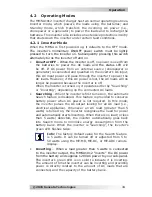
© 2015 Sensata Technologies
Operation
37
Transfer time
– While in Standby mode, the AC input is continually
monitored. Whenever AC power falls below the VAC dropout voltage
(80 VAC, default setting), the inverter automatically transfers back
to Inverter mode with minimum interruption to your appliances—as
long as the inverter is turned on. The transfer from Standby mode
to Inverter mode averages approximately 16 milliseconds. While the
MMSA1012 is not designed as a computer UPS system, this transfer
time is usually fast enough to hold them up. However, the
VAC
Dropout
setting has an effect on the ability of the loads to transfer
without resetting. The lower this setting, the longer the effective
transfer will be and therefore, the higher the probability for the
output loads to reset. This occurs because the incoming AC voltage
is allowed to fall to a level that is so low that when the transfer does
occur, the voltage on the inverter’s output has already fallen to a low
enough level to reset the loads.
The disadvantage of a higher
VAC Dropout
setting is that smaller
generators (or large generators with an unstable output) may
nuisance transfer. This commonly happens when powering loads that
are larger than the generator can handle—causing the generator’s
output voltage to constantly fall below the inverter’s input VAC
dropout threshold.
Info:
You must use the ME-MR, ME-RC, or ME-ARC remote
to adjust the VAC dropout setting—which in turn determines
the VAC dropout threshold.
Info:
When switching from Inverter mode to Standby
mode, the inverter waits approximately 15 seconds to
ensure the AC source is stable before transferring.
4.3 Protection Circuitry Operation
The inverter is protected against fault conditions, and in normal
usage it will be rare to see any. If a condition occurs that is outside
the inverter’s normal operating parameters, then it will shut down
and attempt to protect itself, the battery bank, and your AC loads.
Refer also to the Troubleshooting section to diagnose and clear any
of the fault conditions below.
• Low
Battery
– The inverter shuts down whenever the battery
voltage falls to the Low Battery Cut Out (LBCO) level for over
one minute to protect the batteries from being over-discharged.
Once the inverter has reached the LBCO level and turned off, it
will automatically restart after one of the following conditions:
1. AC power is applied and the inverter begins operating as a
battery charger.
2. Battery voltage rises to the Low Battery Cut In (
LBCI
) level.
The INV LED turns off when a low battery fault condition occurs.
Refer to Table 4-2 to determine the LBCO and LBCI levels for
your particular inverter model.

